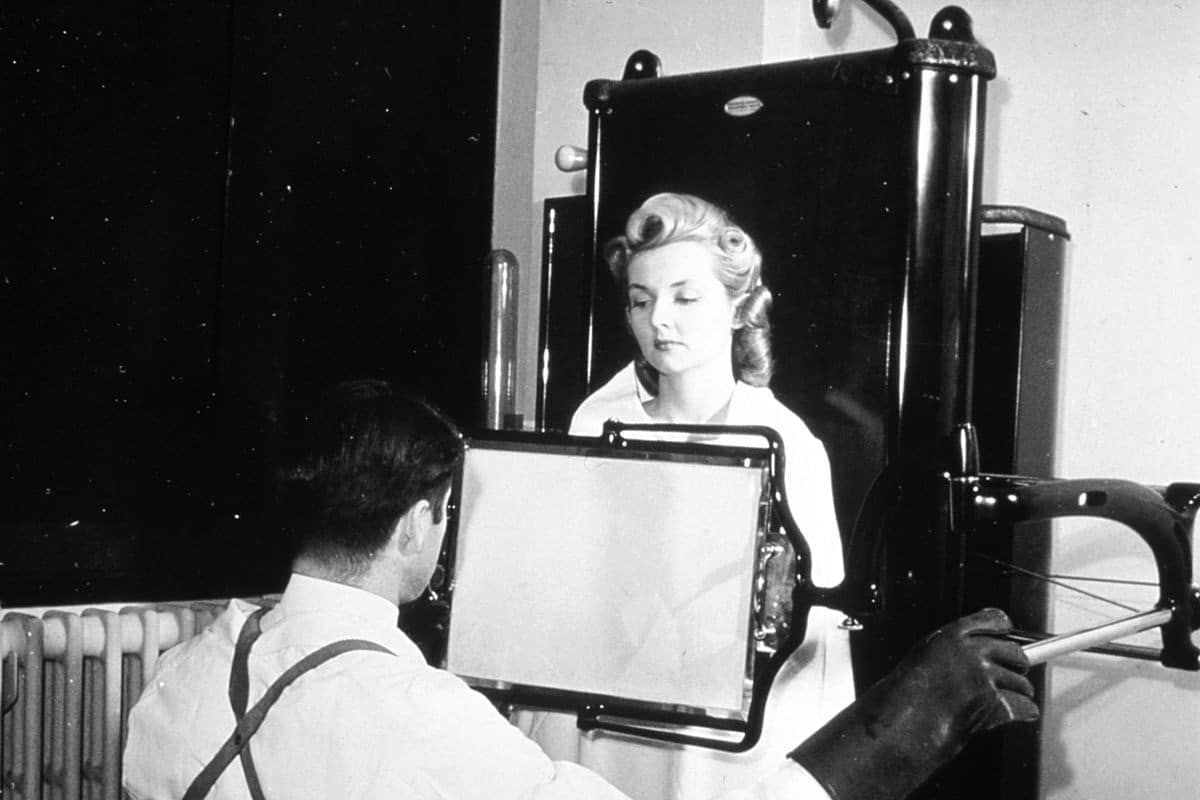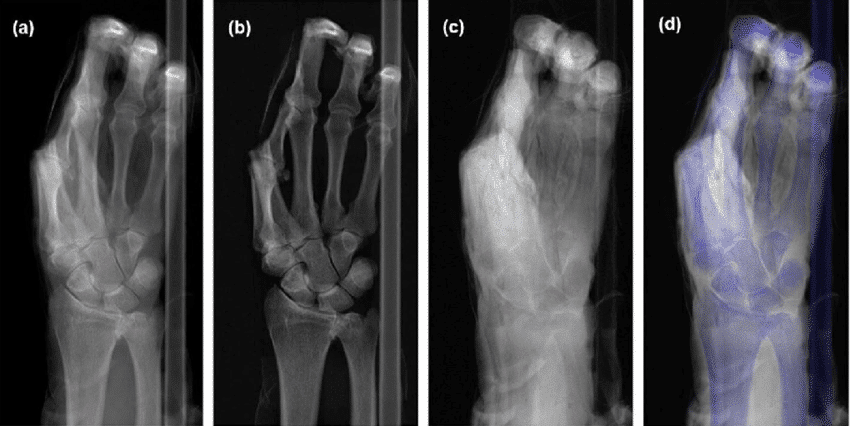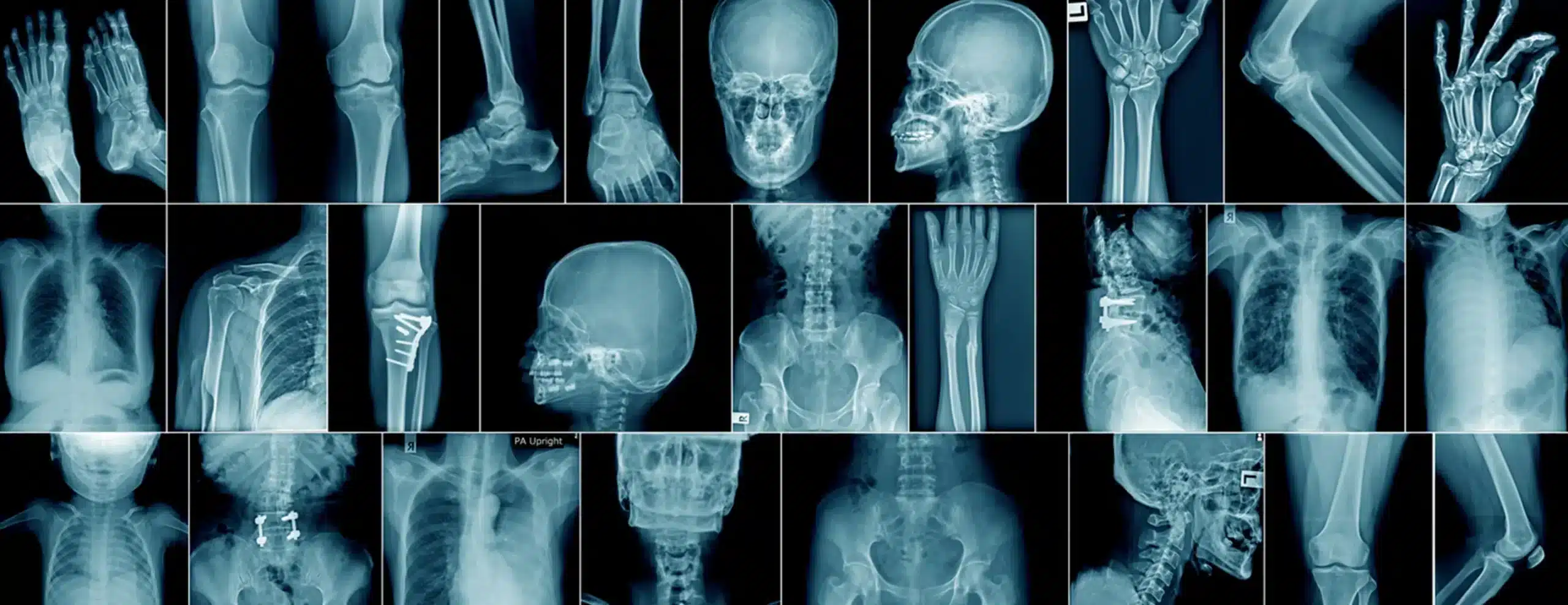Before the late 19th century, doctors relied on stethoscopes to diagnose lung diseases and physical touch to identify bone fractures. However, the German physicist Wilhelm Röntgen discovered X-rays and their use in imaging. Initially, the use of X-ray imaging was merely a side demonstration, but it quickly spread worldwide and became a fundamental aspect of medical diagnosis.
What is X-ray imaging?
X-ray imaging uses invisible electromagnetic energy beams to produce images of internal tissues, bones, and organs on film or digital media. Standard X-rays are performed for various reasons, including diagnosing tumors, bone injuries, dental examinations, and aiding in detecting a wide range of injuries, disorders, and diseases.

X-Ray Imaging are performed using external radiation to produce images of the body, its organs, and other internal structures for diagnostic purposes. X-rays pass through the body’s structures onto specially treated plates, similar to camera films or digital media. The denser the structure, the whiter it appears on the film.
How do X-rays work?
Most people refer to X-ray imaging as a regular radiographic image (a single film or photo). However, X-rays are also a type of radiation used by imaging devices to create images. X-rays are also used in other types of medical imaging, such as computed tomography (CT) scans, to obtain multiple images that computers interpret to create three-dimensional pictures.
When the body is exposed to X-rays, different parts of the body allow varying amounts of X-rays to pass through. Soft tissues like blood, skin, fat, and muscles allow most X-rays to pass through, appearing dark gray on film or digital media. On the other hand, bones or tumors, which are denser than soft tissues, allow fewer X-rays to pass through and appear white on X-rays. When a bone fracture occurs, the X-ray beam passes through the broken area, which appears as a dark line on the white bone in the X-ray.
X-Ray Imaging with contrast material
Some X-Ray Imaging use contrast material (also called contrast agents or dyes). These make certain structures in the body, such as blood vessels, easier to see.
Contrast material can be in liquid, powder, or tablet form, consumed before the X-ray depending on the type of examination. Patients may receive contrast material via:
- Oral ingestion.
- Intravenous (IV) injection or spinal fluid injection.
- Enema.

How is an X-ray performed?
X-ray examinations can be performed in outpatient clinics or as part of inpatient care in hospitals. Although each facility may have specific protocols, the general steps for performing an X-ray are as follows:
1. Preparation before imaging
The patient is asked to remove any clothing or jewelry that may interfere with imaging the area being examined. If necessary, the patient is provided with a gown. The use of lotions, creams, or perfumes is avoided, as these substances can create shadows on X-rays, leading to inaccurate results. Patients may also need to refrain from eating or drinking several hours before the procedure.
2. Body positioning
The area being examined is carefully placed between the X-ray machine and a plate containing the X-ray film or a specialized image plate. Depending on the type of examination, the patient may need to lie down, sit, or stand.
3. Radiation protection
The parts of the body not being examined are covered with a lead shield to reduce radiation exposure.
4. Directing the X-ray beam
The beam is directed at the area being examined. The patient must remain still to avoid blurry images. Maintaining stillness during the imaging process ensures high-quality results.
5. Capturing images
The radiology technician stands behind a protective window to capture the image. Multiple images may be taken from different angles depending on the area being examined. For example, when imaging the chest, both front and side views are usually taken.

What are the types of X-rays?
Several types of X-rays are used to image different areas of the body. Some of the most common types include:
1- Abdominal X-rays
These X-rays help healthcare providers evaluate parts of the digestive system and diagnose conditions such as kidney or bladder stones.
2- Bone X-rays
Patients may undergo bone X-rays if a doctor suspects fractures, joint dislocations, or arthritis. Bone X-rays can also show signs of bone cancer or infections.
3- Chest X-ray
A doctor may request chest X-rays if a patient experiences symptoms such as chest pain, shortness of breath, or a persistent cough.
4- Dental X-rays
Dentists regularly take X-rays of the mouth to check for issues in the teeth, gums, or jaw.
5- Head X-rays
These images help identify skull fractures from head injuries or conditions affecting how skull bones form, such as craniosynostosis.
6- Spinal X-rays
Spinal X-rays can help diagnose spinal curvatures, herniated discs, or other spinal issues.
Other advanced medical imaging techniques using X-rays interpreted by computers include:
- Bone density scans (DXA)
- Computed tomography (CT scans)
- Fluoroscopy
- Mammography

When does a patient need X-rays?
- Diagnosing tumors.
- Detecting bone injuries.
- Imaging arteries to examine blood vessels.
- CT scans for three-dimensional imaging.
- Fluoroscopy to monitor internal movements.
- Identifying the causes of symptoms like pain or swelling.
- Detecting signs of lung infections.
- Locating foreign objects inside the body.
- Identifying structural problems in bones, joints, or soft tissues.
- Planning and evaluating treatments.
What can X-Ray Imaging show?
X-rays can reveal issues such as:
- Arthritis.
- Bone fractures.
- Changes or abnormalities in bone structure.
- Spinal disc herniation.
- Infections.
- Kidney stones.
- Spinal curvatures.
- Dental cavities.
- Tumors.
Can X-Ray Imaging show cancerous tumors?
X-Ray Imaging can reveal cancerous tumors, but they are not the primary method for detecting or diagnosing cancer. This is because tumors in certain organs may be small, hidden behind other structures (e.g., ribs in chest X-rays), or blend with normal tissues.
In conclusion



